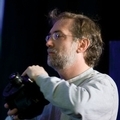(Subscribe to this discussion)
The reproduction of sound may be enhanced by the addition of artificial reverberation when the reproduced sound is below the optimum value of reverberation. Reverberation consists of multiple reflections in which each pencil of sound suffers a decrease in intensity with each reflection. This may be simulated by passing the reproduced sound through a series of transducers with progressive delay and attenuation. A synthetic reverberator has been developed with a loudspeaker, pipe, and microphone delay unit in combination with a feedback system.
Authors:
Olson, Harry F.; Bleazey, John C.
Affiliation:
RCA Laboratories, Princeton, New Jersey
JAES Volume 8 Issue 1 pp. 37-41; January 1960
Publication Date:
January 1, 1960
Click to purchase paper as a non-member or you can login as an AES member to see more options.
 President-Elect-Elect Alex U. Case |
Comment posted September 11, 2015 @ 19:18:46 UTC
(Comment permalink)
Please speak up if you happen to know: 1. Was this ever released as a product? 2. Are there any recordings making use of it? I'd love to hear it. (Respond to this comment)
|
 Scott Dorsey |
Comment posted January 8, 2016 @ 18:34:46 UTC
(Comment permalink)
This looks to me like the early precursor of the Cooper Timecube. —scott |
 Jesse Klapholz |
Comment posted March 30, 2016 @ 16:27:15 UTC
(Comment permalink)
Greetings! No, this was never made into a commercial product; nor was it ever used in any RCA Studio to the best of my knowledge. The people (John Bleazy, et. al.) actually working on these devices would be under Dr. John Volkmann—unsung hero at RCA from 1929 to 1970. I have the personal archives of Dr. Volkman and have been studying them for some 28 years. I've never come across any mention of this device. RCA Recording Studios relied on good room sound and did not even have reverberation chambers in their studios. I have three of the velocity microphones used in this project. Olson's interest were really in architectural acoustics and enhancements thereto. Dr. Olson was not interested in the recording side of the business. So, unfortunately to the best of my knowledge there were no recordings ever made. |
 President-Elect Alex U. Case |
Comment posted September 5, 2016 @ 14:18:25 UTC
(Comment permalink)
Thanks. I always wanted to know its sound qualities, but now I know — I never will. |
![]() To be notified of new comments on this paper you can
subscribe to this RSS feed.
Forum users should login to see additional options.
To be notified of new comments on this paper you can
subscribe to this RSS feed.
Forum users should login to see additional options.
If you are not yet an AES member and have something important to say about this paper then we urge you to join the AES today and make your voice heard. You can join online today by clicking here.
